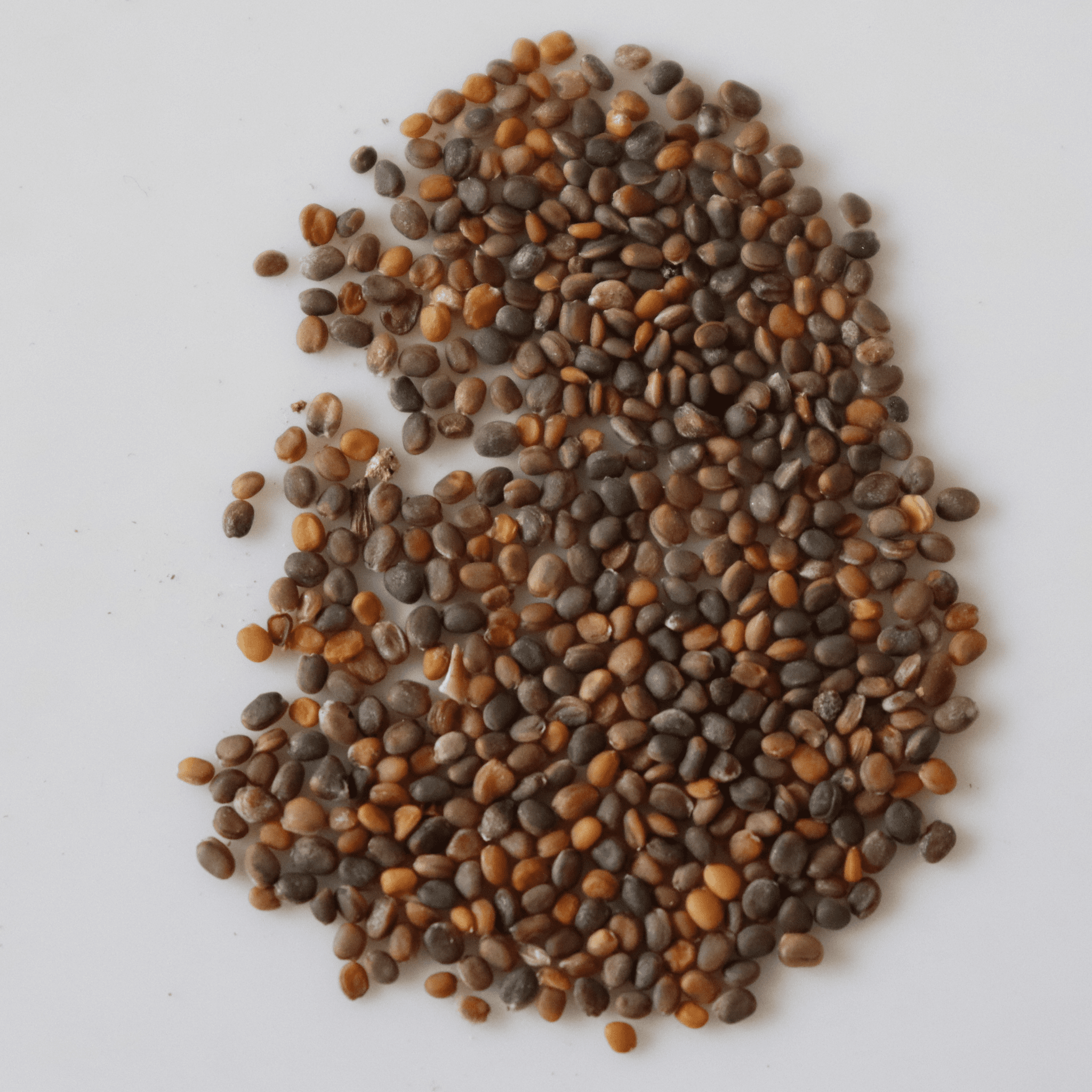

Product Description - Organic Jarjeer Seeds - Open Pollinated
Jarjeer is often used in mesclun seed mixes due to its prolific growth and bolder flavor than other greens. Plant in early spring or early fall for a 6- to 8-week harvest of young leaves. Since the seeds germinate quickly in good soil and seedlings can tolerate a light frost, consider covering plants with cloches or row covers! Jarjeer is not fussy about soil quality and is therefore an obvious option for grow bag gardens. Jarjeer's young leaves are extremely tender and are best consumed fresh in salads or on sandwiches. New older leaves are also delicious, and they make excellent additions to stir-fries, egg dishes, and soups. They should be applied at the very end of the cooking process. The delicate flowers can be scattered on salads or soups, tossed on sandwiches, or even added to beverages.
Benefits/Uses of Jarjeer plant
- Regular consumption of the Jarjeer plant reduces the risk of cancer.
- Jarjeer is high in several vital nutrients for bone health, including calcium and vitamin K in adults.
- Jarjeer is a good source of fiber, regulating blood glucose and may reduceTrusted Source insulin resistance. High fiber foods make people feel fuller for longer, meaning they can help tackle overeating.
- Jarjeer intake has protective effects on the heart.
Specifications of Jarjeer seeds
|
Common Name |
Jarjeer, Jarjeer, rocket, roquette |
|
Sunlight |
Full Sun |
|
Water |
Moderate and even light in the cold frame. |
|
Temperature |
50-65 F |
|
Soil |
Humus-rich, well-draining |
|
Fertilizer |
Nitrogen |
|
Germination |
5-7 days |
|
Harvest Season |
Cool Season |
| No. of seeds | 200+ |
Planting and care of Jarjeer
Sowing of Jarjeer seeds
- Jarjeer can be sown directly from seed, and planting can begin as soon as the soil thaws in the spring.
- Locate a sunny or partially shaded location and sow seeds in spinach grow bags.
- 1/4-inch-deep in rows ten inches apart, with approximately an inch between each row. Alternatively, you can broadcast seeds and thin to 3 or 4 inches apart later.
- The seeds can germinate in a matter of days.
- Sow seed in the spring and then again in the late summer for a fall harvest, or better still, sow seed every two to three weeks in the season for a continuous harvest.
- Jarjeer is a simple plant to grow and maintain. Since it grows so quickly, you can still reseed and wait a couple of weeks if problems do occur.
- Jarjeer thrives in nutrient-dense soil but is adaptable to a wide range of growing conditions. Indeed, it can be grown almost anywhere.
Growing of Jarjeer plant
- Jarjeer is extremely easy to produce, and it grows quickly as well. Jarjeer can be grown in soil or in spinach grow bags.
- Half a centimeter deep in damp soil/potting mix, the seeds can be sown.
- When growing Jarjeer, sow the seeds thickly or densely, and as the plants grow, remove the weaker ones and let the stronger ones grow.
- Do not discard the seedlings that have been thinned. They can be used as salad microgreens.
- One of the positive things about Jarjeer growing from seed is to keep the Jarjeer crop harvesting regularly.
- They may also be grown in containers alongside another plant due to their shallow roots.
Harvesting of Jarjeer
- Harvest young leaves when they reach around 3 inches in length.
- Cut only a few outer leaves, return to variety, and allow the rosette to continue growing.
- Harvest mature plants as soon as possible, just above the soil line.
- They will re-sprout and fill in depending on the weather.
- The leaves turn bitter once the plants bolt by sending up flower stalks. However, avoid yanking out the plants prematurely; the flowers retain a lot of flavor without the heat of the leaves.
Precautions while growing Jarjeer plant
Jarjeer grows so quickly that a single application of a high-nitrogen fertilizer at planting time, such as Azospirillum Nitrogen Fixing Bio Fertilizer, Phospho Bacteria Biofertilizer, or rich compost mixed into the soil, is usually sufficient. Additional feeding is necessary if the leaves are pale green and undernourished, as occurs occasionally in depleted soil. For Jarjeer, as with other leafy vegetables, nitrogen is a critical nutrient.
Common problems affecting Jarjeer plant and solutions
Jarjeer's short and early growing season ensures that you'll miss the majority of insect infestations in the spring, but not necessarily if you replant in late summer. Slugs , flea beetles, aphids, and moths all prefer Jarjeer plants. Watch out for insect eggs and manually delete any that you come across. Aphids may be sprayed with water to remove them. Use beer traps, diatomaceous earth, or another common approach to keep slugs away from the tender leaves.
No. of Jarjeer Seeds - 200+











